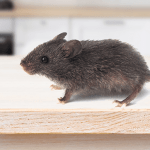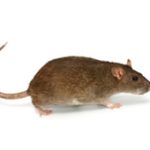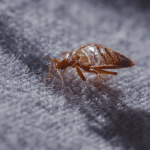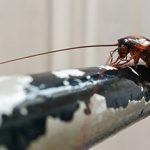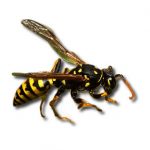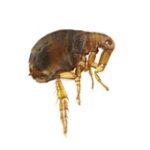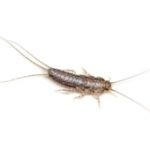How to Get Rid of Mice in Your House
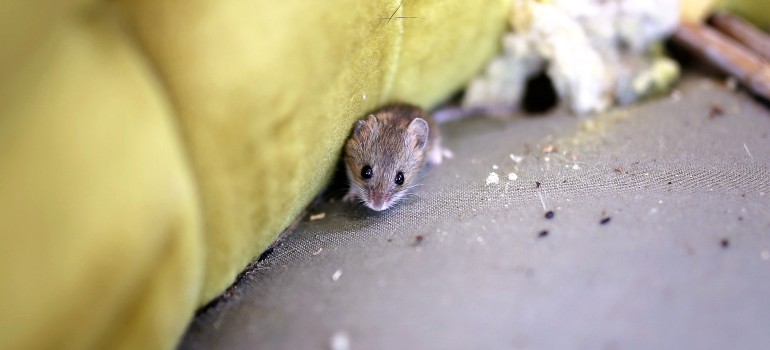 Image: Christin Lola/Shutterstock
Image: Christin Lola/Shutterstock
The presence of mice in your home is a significant challenge and even pose a risk to your health and safety. By chewing on wires, books, and food storage containers, mice spread diseases and damage property.
A mouse control strategy should include sealing entry points, eliminating food sources, setting appropriate traps, and implementing natural mice deterrents, while avoiding inhumane or dangerous methods that pose a threat to humans and pets.
The first thing you have to do is to confirm whether you have an infestation. The most important signs you have to look for are mice droppings, urine puddles, scratches and scratching noises, grease markings, strong smell, seeing a mouse and the most obvious one – finding a mouse nest. The second, and more important, is to get rid of them.
How to get rid of mice in the house
Here are the key steps to get rid of mice in the house:
Throw away contaminated food
- Make sure that all your food is sealed in metal, plastic or glass containers. They are difficult to penetrate and will guard your food properly against the mice.
- If you have a box of whatever, that is only half-used, make sure to transfer the rest to a container and throw the box out of the house. The cardboard is perfect for nesting materials and they will not only steal the insides of it but also bite off whatever they need.
- Don’t leave your bread or bowl of fruit out on the counter even for a day. Put as much as you can in your fridge and the bread in a metal container, if possible.
- Make sure to clean your cabinets, pantries and surfaces every day from crumbs, food residue and spilt liquids.
Seal mice entry points
- Go around your property and seal any cracks and holes you find to prevent mice from entering your property. Steel wool is the cheapest and easiest option.
- Always keep your windows closed or at least monitored. Of course, you will need some fresh air from time to time, but try to be around when the windows are open, so you can spot quickly if a mouse is trying to get in.
Clean up
- Throw away any old boxes, bags, books and any clothing material that you have and don’t use. If you have items that you need, store it securely so that they would not be easy for the mice to reach.
- Go over all the areas where you found droppings, urine puddles, signs of a nest, etc. and sanitise them thoroughly.
- Mice chew not only cardboard but plastic and wood as well, so make sure that you do not store your personal belongings in boxes made from these materials.
- Have a good general clean of your property, especially in places you don’t clean very often like attics, lofts or basements.
Tip: Keep your garden tidy, so there are no hiding places for mice.
Cut off mice food supply
- Even if it doesn’t look like mouse food to you – it is mouse food. They eat almost everything, so regularly clean any food remnants from the floors, counters and other surfaces.
- If you have fruit trees that drop fruits, you have to rake them every now and again. Mice will get out of the house to search for food if there isn’t any inside.
- Keep your outdoor and indoor rubbish with a tight lid and always check if the bin has an entry point of some sort.
- Clean up your pet’s food after they have eaten. Don’t leave it out during the day or overnight.
- If you have a bird’s feeder, clean up the seeds under it every couple of days.
Best way to get rid of mice without poison
Once you complete all the steps enlisted above, you can proceed with the mice removal process. The most effective way to get rid of mice is by trapping. Learn some ways to get rid of a mouse infestation.
Humane Traps
Many people prefer to get rid of mice in a humane way by using live traps. They are pretty easy to set and maybe, the only drawback is that you will catch only one mouse at a time. This makes it ineffective when it comes to large infestations.
The trap is usually a cage with bait inside that will attract the mouse. And the moment the rodent gets inside – the door will close behind, trapping the mouse. Check those traps every couple of hours because it’s not ideal to leave the rodent there for a long time.
Place mouse traps in strategic locations:
- Position traps along walls, behind appliances, or near droppings.
- Use bait like peanut butter, seeds, or chocolate.
- Check traps daily and replace bait as needed.
Read more: How to keep mice out of your car.
Glue Traps
Glue traps are another way you can catch mice. Our certified mouse exterminator Jordan Foster never recommends using glue traps as they are extremely cruel and can be dangerous to pets. Traps made of glue or sticky substances are highly inhumane because they cause animals to starve to death or self-injure while trying to escape. Furthermore, these traps are less effective against adult mice, who quickly learn to avoid them.
Mice Bait Stations
Using poison bait stations requires extreme caution. The trap itself is usually a plastic box that is designed to hold poison. Below you can find some general tips when placing such a trap.
- When you are setting up the trap, always use gloves.
- Put the poison only in the designated sections.
- Place the traps only in hidden and enclosed spaces, where mice are more likely to nest.
- Never put traps outside because they could harm a stray or a wild animal.
- Store any excess poison in a dark and dry place, far away from children and pets.
Natural mice control
Although it may sound like the perfect, humane, safe and beautifully smelling decision, natural mice control rarely works. Mice are really smart creatures and they learn from their environment all the time.
Some of the supposed repellents include mothballs, peppermint and ultrasound waves.
- Mothballs may work perfectly for the moths and other small insects but they don’t bother the mice at all. The insect repellent contains a small amount of naphthalene, which could be dangerous but in larger amounts. Mothballs, in general, are just ignored by the mice.
- Peppermint oil smells amazing and it’s completely useless. There is a myth that it works because in large amounts, it’s very potent and since mice have a very developed sense of smell, then, it must be bad for them. Unfortunately, mice often live in the sewer, around rubbish and near their own faeces, so a little bit of peppermint oil is nothing for them. Most likely, they won’t even smell it as the oil scent rises up in the air and the mice are always low, close to the walls.
- Ultrasound waves sound very intriguing and they are mainly used by people who prefer the DIY version of everything and always try to do things on their own. As we mentioned earlier, mice are highly adaptable and smart creatures. Once they have found a home with food and shelter, they wouldn’t give it up because of some sound waves that slightly irritate their ears. They’ll find a way to go around them and still reach the food.
Professional mice control
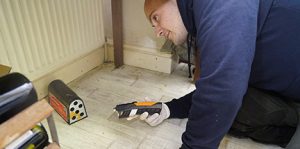
Calling a professional mouse exterminator to get rid of mice in your house is the safest way to go. These are trained people who have been in all kinds of houses and have dealt with all levels of infestation. That’s their job and they do it every day. They would know how to quickly locate the nest, the best and safest way to get rid of the mice and will give you all the instructions you need to prevent such situations in the future. Whenever you’re in doubt, just call a professional and you will ensure your home and your family’s safety.
How to know when the mice are gone
If you no longer find new droppings in cupboards, along skirting boards, or near food sources, it suggests the infestation has ended. Mice are most active at night, often making scratching, scuttling, or gnawing noises inside walls, ceilings, or under floors. If these sounds stop, it’s a good indication that the mice have left. If there are no fresh gnaw marks or new damage, it suggests they are no longer present. If you have not spotted any mice for several weeks, they are likely gone.
How to prevent a mouse infestation
After you finally got rid of the mice, it’s really important to know how to prevent a similar infestation in the future. Here are the most important steps you need to follow.
- Take out your rubbish regularly and block holes that let light in. Rubbish and light attract these pests.
- Keep your place clear of junk and corners clean. It’s not just rubbish, mice are attracted to clutter in general. Bottles, newspapers, old furniture, clothing – anything that would give the mouse a place to hide.
- Secure the perimeter. Cracks in pipes, holes in the foundation, and spaces under doors, are all breach points, that mice can use to enter through.
- Secure your food in airtight containers so that mice have no food supply to survive. Remember: this includes any pet food, as well!
- Get a cat. Perhaps it’s a cliché, but truths become cliché for a reason! Cats keep mice and rats away!
- Clean the garden. Mice thrive in piles of debris and untrimmed hedges. If you keep it tidy, rodents will have fewer places to hide.
- Plant strong-smelling plants like garlic and mint as the scent is too much for mice to bear.
- Keep mulching to a minimum as mice love these kinds of materials for nesting.
- Attract birdlife. This may sound like a crazy idea but it’s a fact that a family of predatory birds such, as barn owls, can eat up to fifteen mice a night. Not only that, but it’s a rodent’s natural instinct to avoid their bird enemies and the places they inhabit.
So, these are the best ways to get rid of mice, dispose of them afterwards and prevent them from entering your home again. If you are confident enough, don’t hesitate to try them and if you have any doubts about their effectiveness, just call a professional and let him do the job for you.
Final thoughts
The most effective mouse control requires a comprehensive approach rather than relying on one solution alone. Start by sealing all possible entry points around your home, paying particular attention to pipes, utilities, and doors and windows. Meanwhile, store all edibles in mouse-proof containers and maintain rigorous cleaning routines to remove crumbs and food residue that may attract mice. Use humane traps such as snap traps or homemade bucket traps instead of cruel glue traps or dangerous poisons based on observed mouse activity.
Persistence is key—mouse control isn’t an overnight process but rather an ongoing one that becomes easier to maintain after the initial infestation is resolved.
Consider that we give information on possible ways to get rid of mice. However, we cannot affirm that all of the above approaches will work for you.





